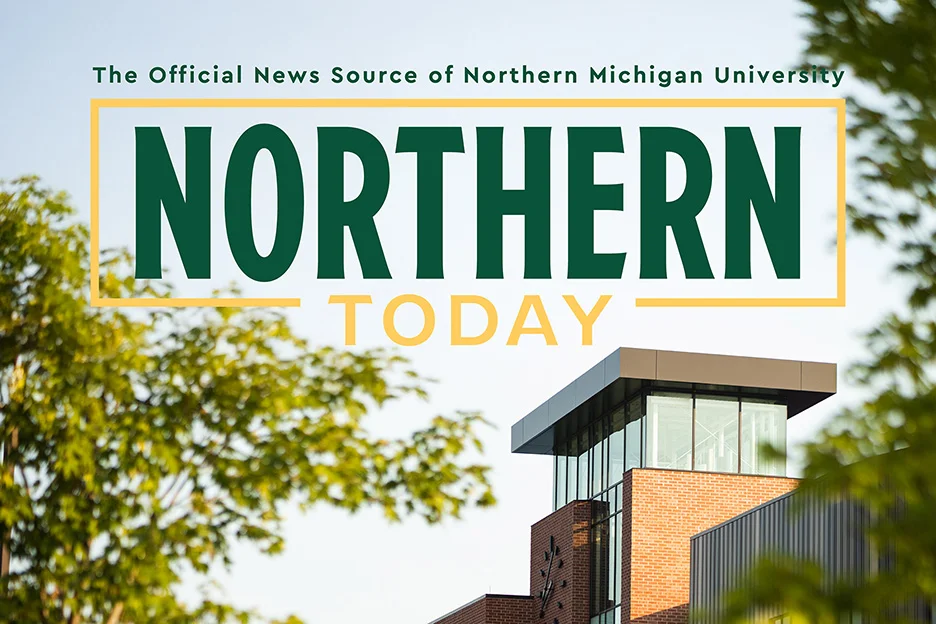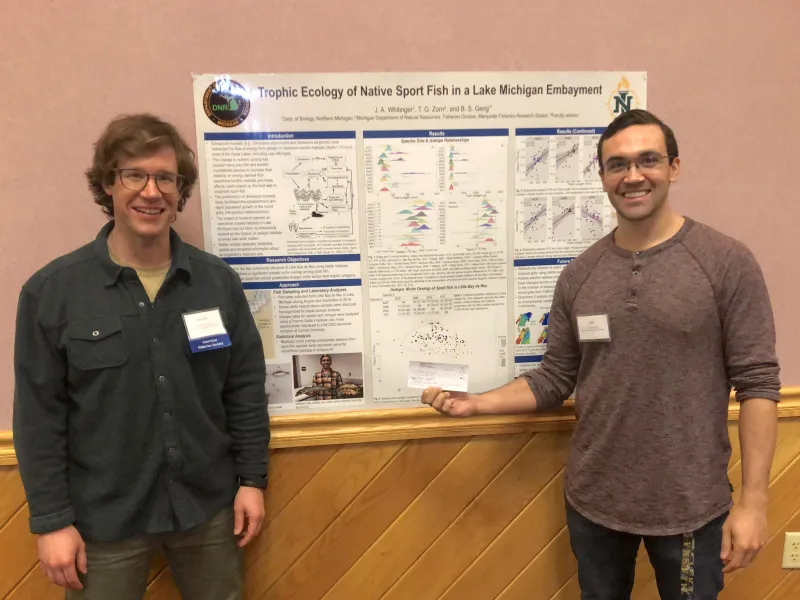Northern Michigan University biology graduate student and teaching assistant John Whitinger was recently awarded Best Poster at the Michigan Chapter of the American Fisheries Society-Wildlife Society meeting, held recently at the Treetops Resort in Gaylord. The win marks the first time that NMU has been recognized for a top research project at the meeting, according to NMU biology professor Brandon Gerig.
Whitinger's poster, titled “Trophic Ecology of Sport Fish in a Lake Michigan Embayment,” focuses on characterizing how invasive species such as quagga mussels and round goby fish influence native sport fish, such as walleye and yellow perch.
The poster was awarded this high honor over other research projects being conducted by agencies such as the U.S. Geological Survey and U.S. Fish and Wildlife Service, as well as the following universities: Michigan State, Central Michigan, Grand Valley State, Lake Superior State, Notre Dame and the University of Toledo.
“I really enjoyed the opportunity to talk with other fisheries professionals from around the state and learn about the research that students from other universities are conducting,” said Whitinger, a native of Anchorage, Alaska. “It was exciting to share my research with other fisheries scientists and receive positive feedback. I am happy I was able to represent NMU's biology department and our growing fisheries research program, and I am looking forward to attending again next year.”
Whitinger said his research uses stable isotope analysis to measure the stable isotope ratios of carbon and nitrogen to better understand the trophic ecology of the fish community in Little Bay de Noc. Carbon allows researchers to differentiate where different fish species are getting their energy from so they can distinguish between, for example, the offshore food web and the nearshore food web.
Nitrogen provides an indication of where that species fits within the food web so researches can separate out lower-level organisms, such as mussels, from intermediate small prey fish like a juvenile yellow perch, from a large apex predator like a northern pike. Whitinger said results suggest that walleye, northern pike, smallmouth bass and, to a certain extent, yellow perch are converging on a common prey resource which we hypothesize is round goby.

